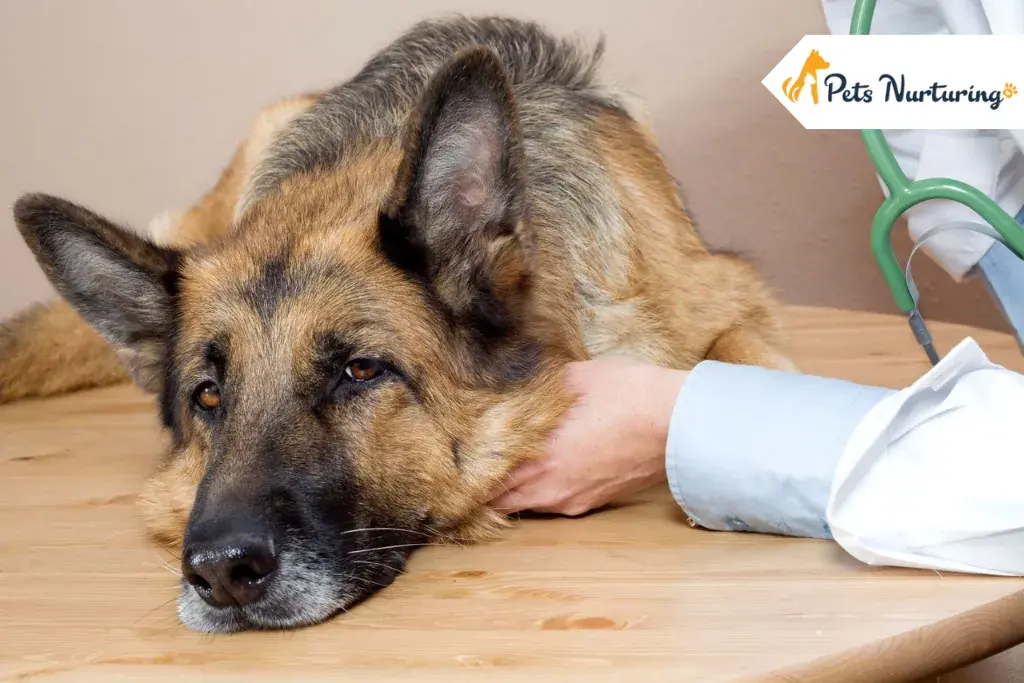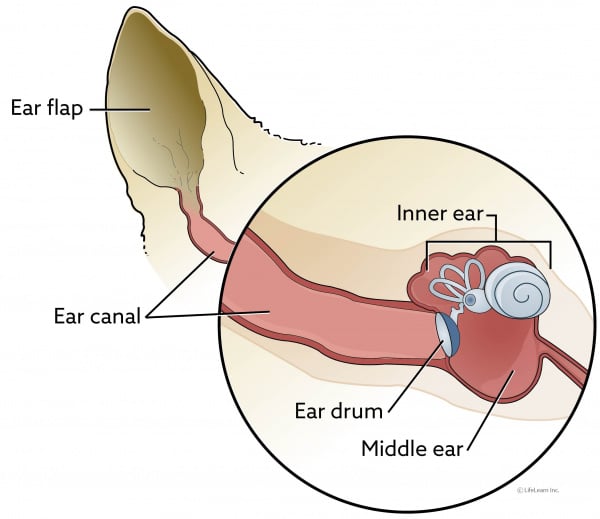
Have you ever noticed your dog walking in circles, tilting their head at an angle, or seeming a bit unsteady on their paws?
These could be signs of vestibular disease in dogs! So, what exactly is vestibular disease? It is a medical condition affecting the inner ear that disrupts your dog’s sense of balance.
Watching our beloved dogs suffer from any illness can be heart-wrenching, mainly when it impacts their balance and coordination. This is an alarming thing for all dog owners. Is vestibular disease in dogs fatal? No, in most cases, it is also treatable. However, understanding this disorder is highly crucial. Today, in this guide, I will share all the essential information about vestibular disease in canines. From symptoms and causes to treatment options and vet recommendations, here you will find everything related to this disorder. So, keep reading till the end to significantly improve the quality of life for your furry friend.
Let’s get started.
What is Vestibular Disease in Dogs?

Vestibular disease, also referred to as vestibular syndrome or idiopathic vestibular disease, affects the vestibular system, which is responsible for maintaining balance and spatial orientation.
Let’s understand it this way: Imagine spinning around a circle for 3 minutes continuously; how would you feel then?
A dog suffering from vestibular disease feels the same dizzy and head-spinning feeling. When the vestibular system malfunctions, it sends confusing signals to the brain, leading to dizziness, disorientation, and difficulty walking.
There are two main categories of vestibular disease in dogs:
- Peripheral vestibular disease (PVD): This affects the inner ear, often due to infections, inflammation, or tumors.
- Central vestibular disease (CVD): This involves problems in the brain stem, the part of the brain that receives information from the vestibular system. This is less common than peripheral disease in puppies.
Symptoms of Vestibular Disease in Dogs
Vestibular disease in dogs can be painful to see, but it is important to recognize and investigate whether the condition is severe or not. Vestibular disease in dogs symptoms can include head tilt, loss of balance, and abnormal eye movements.
Look out for:
- Loss of balance
- Head tilt to one side
- Spontaneous nystagmus (rapid, involuntary eye movements)
- Disorientation
- Rolling over
- Unwillingness to eat or drink
- Staggering or Stumbling
- Nausea and Vomiting
- Continuously circling in one direction
- Straining of the facial muscles
- Difficulty standing or walking (Standing with legs spread wide)
Causes of Vestibular Disease in Dogs

The exact cause of vestibular disease in dogs can vary. It may be caused by an infection, inflammation, trauma, or even tumors. In some cases, the cause of vestibular disease is unknown, referred to as idiopathic vestibular disease in dogs. This particular type is commonly seen in older dogs; this is why it is also referred to as geriatric or “old dog” vestibular disease.
What causes vestibular disease in dogs?
The other potential causes include:
- Ear infections
- Ear mites
- Brain or inner ear polyps.
- Brain or inner ear tumor.
- Ear infections
- Nerve damage
- Hypothyroidism
- Old age
- Stroke
- Trauma to the head
- Under-active thyroid
- Reaction to certain medicines.
Vestibular Disease in Dogs Treatment
How do veterinarians diagnose vestibular disease in dogs?
Diagnosing vestibular disease in dogs typically involves a physical examination, blood tests, and imaging studies such as X-rays or MRIs.
Treatment varies depending on the underlying cause. More tests are required to diagnose canine idiopathic vestibular syndrome (CIVS) in-depth. In the treatment of idiopathic vestibular syndrome, supportive care is usually sufficient. This may involve:
- Rest and confinement: Limiting your dog’s activity allows their body to adjust and recover.
- Hydration: Ensure your dog stays hydrated by offering water frequently.
- Medication: Medications like anti-nausea drugs can help manage symptoms like nausea and vomiting.
If the cause is an ear infection, antibiotics or antifungal medications will be prescribed. In cases of tumors or other underlying conditions, more specific treatment approaches may be necessary, such as:
- Ear cytology
- Complete blood count
- Internal organ function or biochemistry test
- Urinalysis
- Advanced imaging
Vestibular Disease In Dogs Home Treatment
There’s no cure-all home treatment for vestibular disease, so professional veterinary care is critical. However, you can follow some steps at home to help your dog feel more comfortable during recovery.
- Provide a quiet, comfortable, non-slip area with soft bedding for rest.
- Keep your dog’s environment free of hazards to prevent falls.
- If your dog struggles to walk, carry them outside to relieve themselves.
- Take your beloved pooch for short walks when they seem ready.
- Offer easy-to-digest, bland food to prevent nausea, and put their food and water bowls in an easily accessible space.
- Use a harness or sling to assist your dog when walking.
- Make food and water bowls easily accessible, and consider using raised bowls to minimize head tilting.
When To Contact a Vet?

When should I see a vet if my dog shows signs of vestibular disease?
Seek immediate veterinary attention if your dog experiences any of the following vestibular symptoms:
- Facial paralysis
- Seizures
- Loss of consciousness
- Fever
- Difficulty breathing
FAQs
No, vestibular disease in dogs is not contagious.
Vestibular disease in dogs can often be managed, and symptoms can improve, but a complete cure depends on the underlying cause.
Vertigo (dizziness) in humans and vestibular disease in dogs are the same, and both affect the balance and coordination systems. This causes symptoms like dizziness, disorientation, and sometimes nausea. However, vestibular disease in dogs is often more acute and can have various underlying causes.
The recovery time for vestibular disease in dogs may vary depending on the dog’s overall health condition. Some dogs may show improvement within a few days, while others may take several weeks to recover fully.
Yes, dogs with vestibular disease can still eat and drink, but need assistance as they face difficulty standing or balancing.
Key Takeaways
Vestibular disease in dogs can be a frightening experience for both dogs and pet owners. This is why having information about this syndrome is crucial. If you notice any signs or symptoms, immediately consult your vet. And if your dog has vestibular disease, don’t panic because, in most cases, dogs do recover completely. So, go for a proper diagnosis, provide supportive care, and have patience, and your furry friend will become healthy and happy soon!
Explore Further











